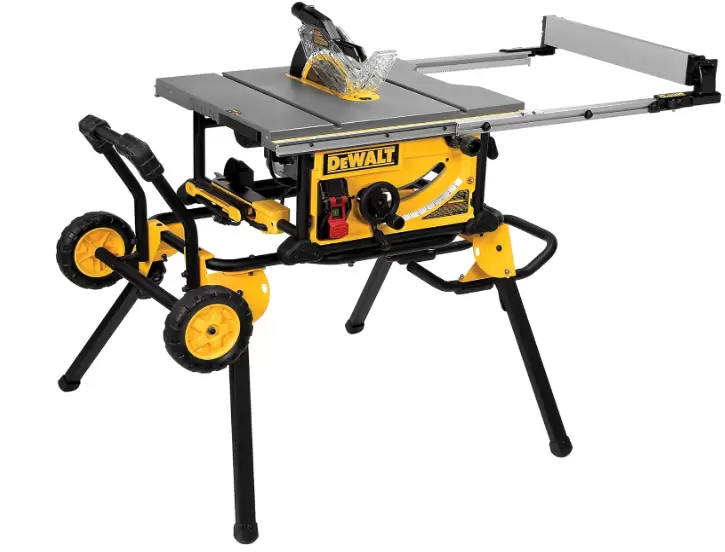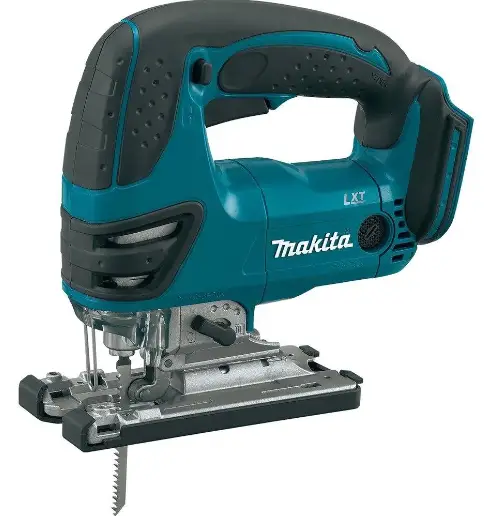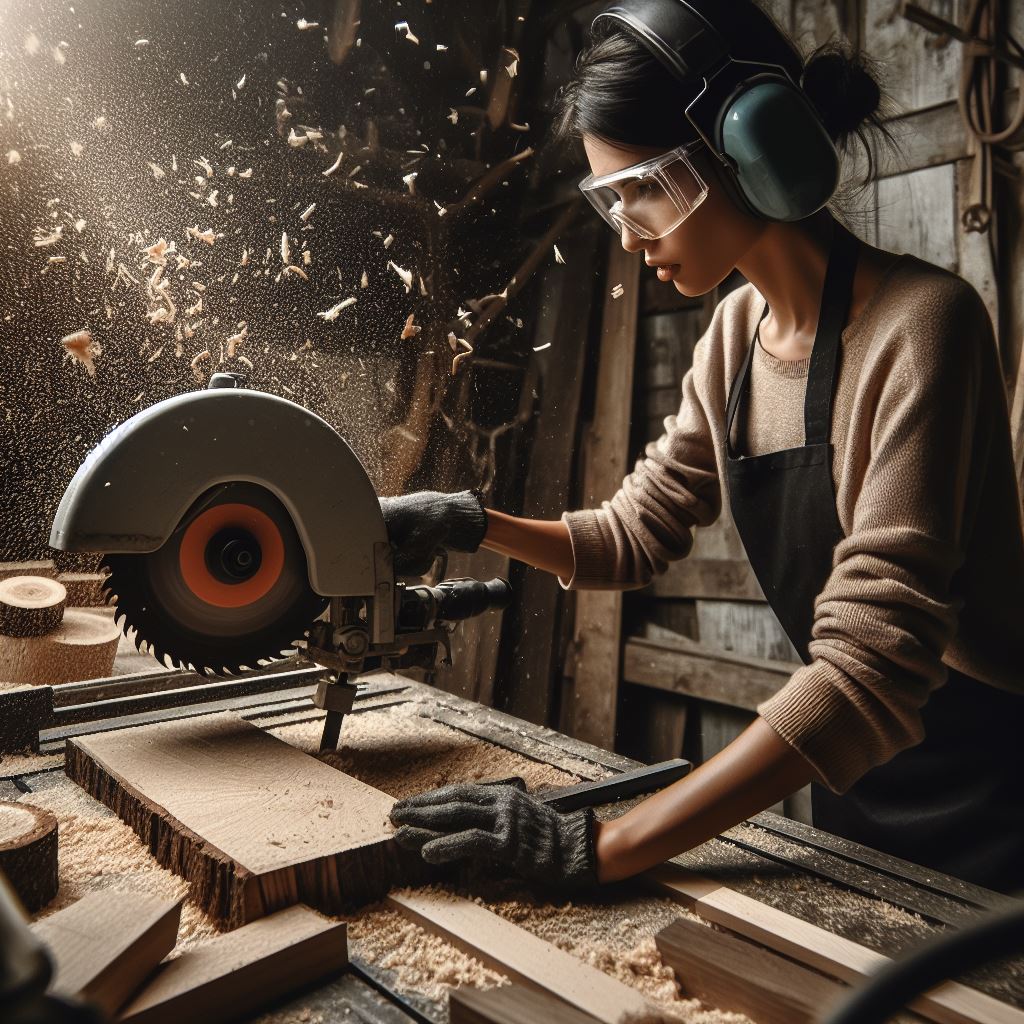Introduction
In the realm of woodworking, having the right tools can make all the difference between a flawless project and a frustrating experience. Two power tools that often find themselves at the heart of this debate are the table saw and the jigsaw. While both serve distinct purposes, their capabilities and limitations can significantly impact the quality of your work. In this comprehensive guide, we’ll delve into the nuances of these two essential tools, exploring their strengths, weaknesses, and the situations where one may outshine the other.
Understanding the Table Saw

A table saw is a stationary woodworking tool that features a circular blade protruding through a flat surface or table. Its primary function is to make precise, straight cuts through wood or other materials. Table saws are renowned for their ability to deliver clean, accurate rip cuts (cutting along the grain) and cross cuts (cutting across the grain).
Advantages of the Table Saw
- Precision and Accuracy: With a sturdy fence system and adjustable blade height, table saws are designed to deliver incredibly precise and consistent cuts, making them ideal for tasks like ripping boards, cutting dadoes, and creating precise joinery.
- Speed and Efficiency: Table saws can quickly and efficiently cut through larger workpieces, saving time and effort compared to handheld tools.
- Versatility: With the right accessories, such as dado blades, miter gauges, and jigs, table saws can perform a wide range of cuts, including miters, bevels, and dados.
- Repeatability: Once the fence and blade settings are dialed in, table saws can consistently replicate the same cut over and over again, ensuring accuracy and consistency across multiple pieces.
Limitations of the Table Saw
- Limited Mobility: As a stationary tool, table saws lack portability, making them less suitable for jobsite work or projects that require frequent relocation.
- Restricted Cutting Patterns: While table saws excel at straight cuts, intricate or curved cuts can be challenging or impossible without additional jigs or accessories.
- Safety Concerns: With an exposed, spinning blade, table saws pose significant safety risks if not used properly, requiring extra caution and the use of appropriate safety equipment.
Understanding the Jigsaw

A jigsaw, also known as a saber saw or scroll saw, is a handheld power tool that features a reciprocating blade designed for making curved or intricate cuts in various materials, including wood, plastic, and even metal. Its versatility and maneuverability make it an indispensable tool for woodworkers and DIYers alike.
Advantages of the Jigsaw
- Curved and Intricate Cuts: Jigsaws excel at creating curved, freehand, or intricate cuts, making them ideal for tasks like cutting out shapes, creating decorative details, or making cut-outs in cabinetry or furniture.
- Portability: As a handheld tool, jigsaws are highly portable, allowing you to take your work to the project site or tackle tasks in tight spaces.
- Material Versatility: With the right blade, jigsaws can cut through a wide range of materials, including wood, plastics, composites, and even light-gauge metals.
- Maneuverability: The compact size and ergonomic design of jigsaws allow for easy maneuvering, enabling you to make cuts in tight spaces or at various angles.
Limitations of the Jigsaw
- Accuracy and Precision: While jigsaws can make intricate cuts, achieving precise and accurate straight cuts can be challenging, especially over longer distances.
- Blade Deflection: The reciprocating motion of the jigsaw blade can cause deflection or wandering, leading to less precise cuts, especially in thicker materials.
- Limited Cutting Depth: Jigsaw blades typically have a limited cutting depth, which can restrict their use for thicker materials or applications that require deeper cuts.
- Tear-Out and Splintering: Due to the up-and-down motion of the blade, jigsaws can sometimes cause tear-out or splintering on the top or bottom surfaces of the workpiece.
When to Use a Table Saw

Table saws are the go-to choice for woodworking projects that require precise, straight cuts, such as:
- Ripping boards to width
- Crosscutting boards to length
- Creating dadoes, rabbets, and other joinery
- Cutting large or thick workpieces
- Repeatable, consistent cuts across multiple pieces
When to Use a Jigsaw

Jigsaws are the tool of choice for projects that involve intricate or curved cuts, such as:
- Cutting out shapes or patterns
- Creating decorative details or cutouts
- Cutting holes or openings in existing surfaces
- Working with various materials, including wood, plastic, and light metals
- Accessing tight or confined spaces
Combining the Power of Both Tools
While table saws and jigsaws have distinct strengths and weaknesses, many woodworking projects can benefit from utilizing both tools in tandem. For example, you might use a table saw to make precise straight cuts for the main components of a project, and then employ a jigsaw to create decorative cutouts or intricate details.
By understanding the capabilities and limitations of each tool, you can maximize their potential and produce high-quality, professional-grade results.
FAQs
Q: Can a jigsaw be used as a substitute for a table saw?
A: While a jigsaw can make straight cuts, it is not recommended as a substitute for a table saw when precision and accuracy are critical. Jigsaws are better suited for curved or intricate cuts, while table saws excel at straight, repeatable cuts.
Q: Is it possible to make curved cuts with a table saw?
A: While not the primary function of a table saw, you can make curved cuts using specialized jigs or accessories, such as a router table or a pattern-cutting jig. However, these methods can be more complex and time-consuming than using a jigsaw.
Q: Which tool is safer to use, a table saw or a jigsaw?
A: Both tools require proper safety precautions and careful usage. However, table saws generally pose a higher risk due to the exposed, spinning blade. Jigsaws are considered slightly safer, but you should still exercise caution and follow safety guidelines.
Q: Can a jigsaw cut through thick materials like a table saw?
A: No, jigsaws have limited cutting depth and are not designed for cutting through thick materials like a table saw. Table saws can handle much thicker workpieces, making them more suitable for tasks that require deeper cuts.
Q: Is it necessary to have both a table saw and a jigsaw in a woodworking shop?
A: While having both tools is ideal for tackling a wide range of woodworking projects, it is not an absolute necessity. Many woodworkers choose to start with one tool, typically a table saw for its versatility, and then add a jigsaw as their needs and projects evolve.
Table 1: Comparing Table Saw and Jigsaw Capabilities
| Capability | Table Saw | Jigsaw |
|---|---|---|
| Straight, Precise Cuts | Excellent | Fair |
| Curved or Intricate Cuts | Poor | Excellent |
| Cutting Depth | High | Limited |
| Portability | Low | High |
| Repeatability | High | Low |
| Material Versatility | Wood | Wood, Plastic, Metal |
Table 2: Suitable Applications for Table Saws and Jigsaws
| Applications | Table Saw | Jigsaw |
|---|---|---|
| Ripping Boards | X | |
| Crosscutting Boards | X | |
| Dadoes and Rabbets | X | |
| Cutting Shapes and Patterns | X | |
| Decorative Cutouts | X | |
| Cutting Holes in Surfaces | X | |
| Tight or Confined Spaces | X |
Conclusion
In the world of woodworking, the table saw and the jigsaw are two essential tools that complement each other’s strengths and weaknesses. While the table saw reigns supreme in delivering precise, straight cuts and handling larger workpieces, the jigsaw shines when it comes to intricate, curved cuts and maneuverability.
Understanding the capabilities and limitations of each tool is crucial for making informed decisions and achieving professional-grade results. Whether you’re a seasoned woodworker or a DIY enthusiast, mastering the use of both the table saw and the jigsaw will open up a world of possibilities, allowing you to tackle a wide range of projects with confidence and precision.
Remember, safety should always be a top priority when working with power tools. Invest in proper safety equipment, follow manufacturer guidelines, and never compromise on safety for the sake of expediency.
With the knowledge gained from this comprehensive guide, you’re now equipped to choose the right tool for the job and unlock your full creative potential in the realm of woodworking.
